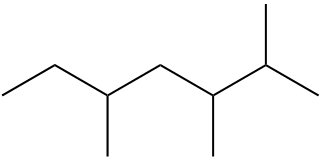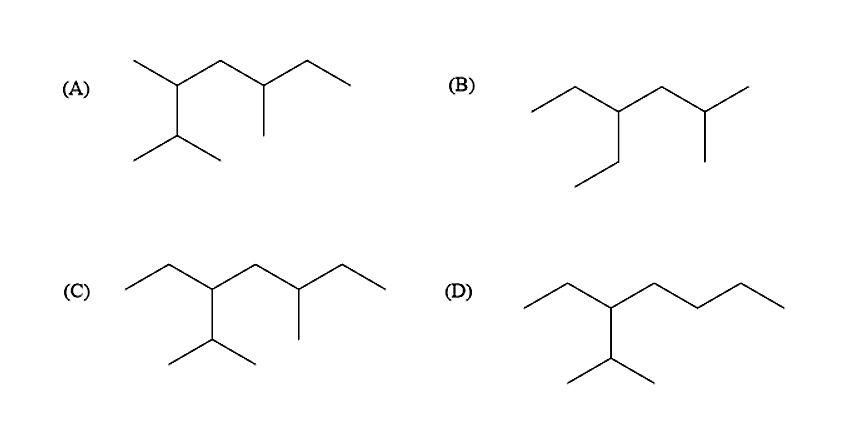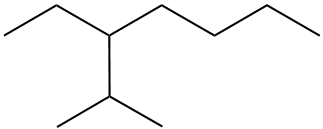
Kerosene is used as an aircraft fuel. Q is one of the molecules in kerosene and has the skeletal formula shown. Other structural isomers of this molecule are also found in kerosene. Which structure is a structural isomer of Q?




Answer
483.3k+ views
Hint: In order to find the structural isomer of Q, we must have an idea about what a structural isomer is. We should also be aware of different types of structural isomer present. The above given is an example of chain isomerism.
Complete answer:
Isomers are molecules that are having identical molecular formulas i.e. same number of atoms of each element but different arrangements of the atoms in space. Isomers do not have similar chemical or physical properties. Isomerism can be classified into two types; they are Structural isomerism and stereoisomerism.
First, what is structural isomerism? When the isomers differ only in the atomic arrangement of the molecule are known as the structural isomer and the phenomenon is known as the structural isomerism.
Two or more compounds which have the same chemical formula but different arrangement of carbon atoms in the linear or branched chains are referred to as chain isomers, and the phenomenon is known as chain isomerism.
In the question the given isomer Q is a structural isomerism. Since in the isomer Q, the number of the carbon atoms in the carbon chain is the same but the branching is different from option (D).

Therefore, the correct answer is option (D).
Note:
Not only chain isomerism there are also other structural isomerism present, they are
- Position isomerism
When the positions of the functional groups or substituent atoms are present in different positions of the isomers are called position isomerism.
- Functional isomerism
This isomerism arises when there is a different functional group present with the same chemical formula.
Complete answer:
Isomers are molecules that are having identical molecular formulas i.e. same number of atoms of each element but different arrangements of the atoms in space. Isomers do not have similar chemical or physical properties. Isomerism can be classified into two types; they are Structural isomerism and stereoisomerism.
First, what is structural isomerism? When the isomers differ only in the atomic arrangement of the molecule are known as the structural isomer and the phenomenon is known as the structural isomerism.
Two or more compounds which have the same chemical formula but different arrangement of carbon atoms in the linear or branched chains are referred to as chain isomers, and the phenomenon is known as chain isomerism.
In the question the given isomer Q is a structural isomerism. Since in the isomer Q, the number of the carbon atoms in the carbon chain is the same but the branching is different from option (D).

Therefore, the correct answer is option (D).
Note:
Not only chain isomerism there are also other structural isomerism present, they are
- Position isomerism
When the positions of the functional groups or substituent atoms are present in different positions of the isomers are called position isomerism.
- Functional isomerism
This isomerism arises when there is a different functional group present with the same chemical formula.
Recently Updated Pages
Master Class 11 Business Studies: Engaging Questions & Answers for Success

Master Class 11 Accountancy: Engaging Questions & Answers for Success

Master Class 11 Computer Science: Engaging Questions & Answers for Success

Master Class 11 English: Engaging Questions & Answers for Success

Master Class 11 Social Science: Engaging Questions & Answers for Success

Master Class 11 Economics: Engaging Questions & Answers for Success

Trending doubts
Which one is a true fish A Jellyfish B Starfish C Dogfish class 11 biology CBSE

State and prove Bernoullis theorem class 11 physics CBSE

1 ton equals to A 100 kg B 1000 kg C 10 kg D 10000 class 11 physics CBSE

In which part of the body the blood is purified oxygenation class 11 biology CBSE

One Metric ton is equal to kg A 10000 B 1000 C 100 class 11 physics CBSE

Difference Between Prokaryotic Cells and Eukaryotic Cells




